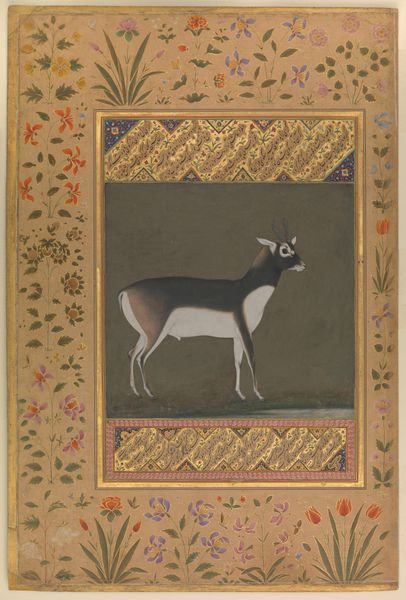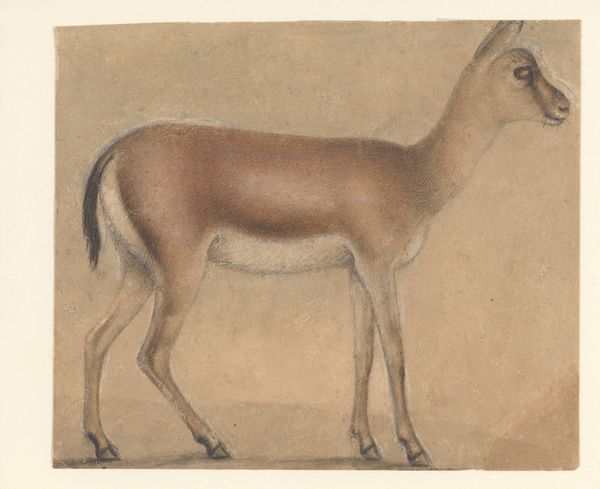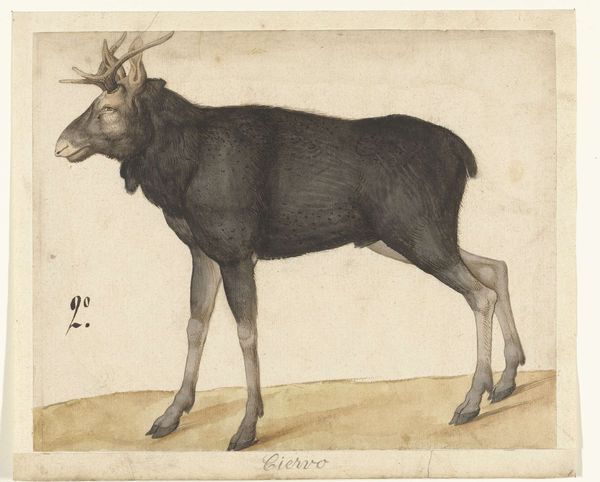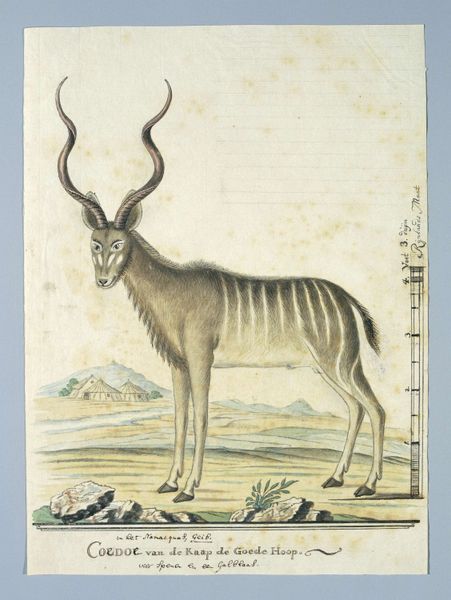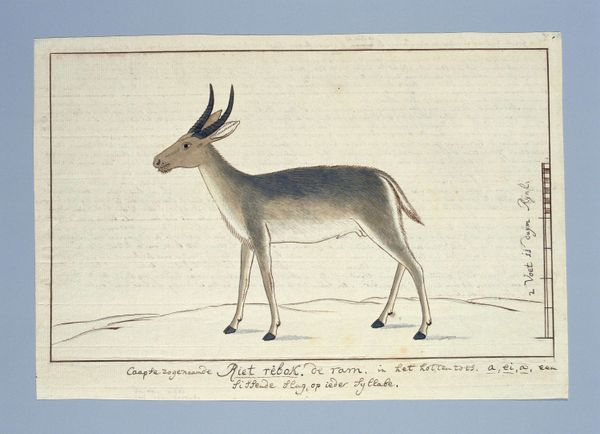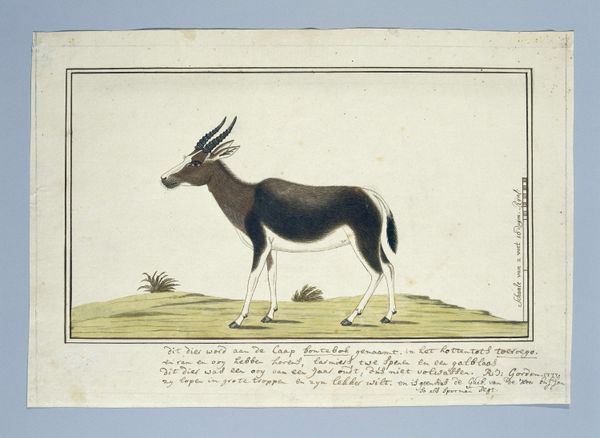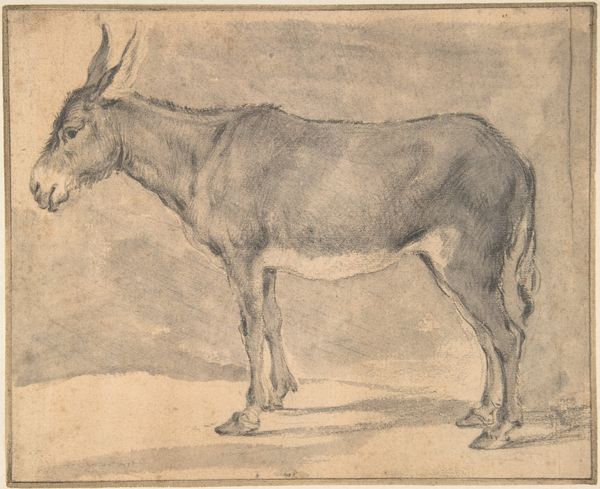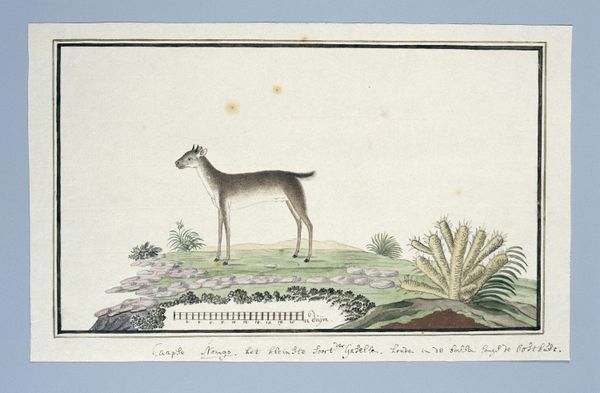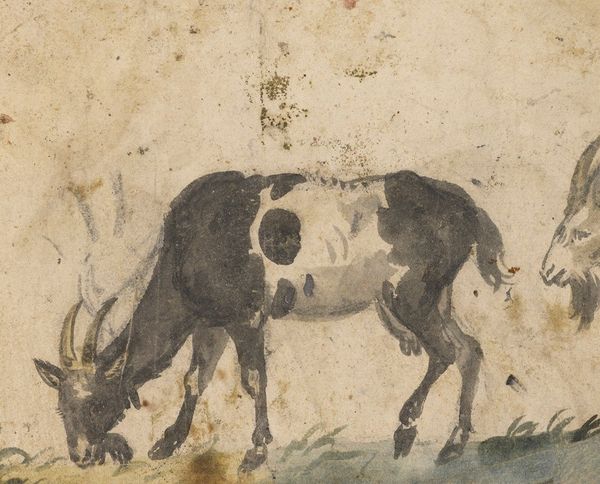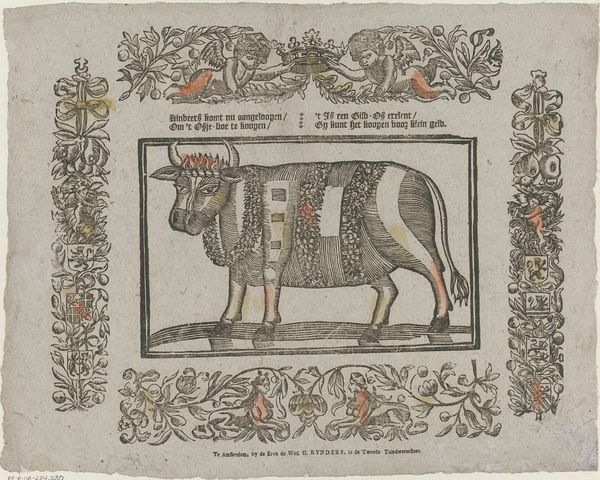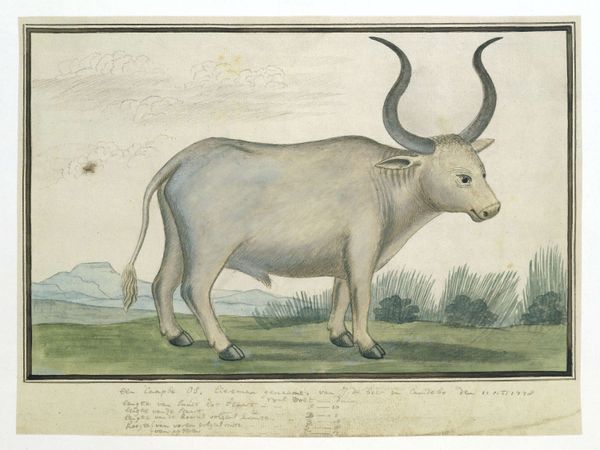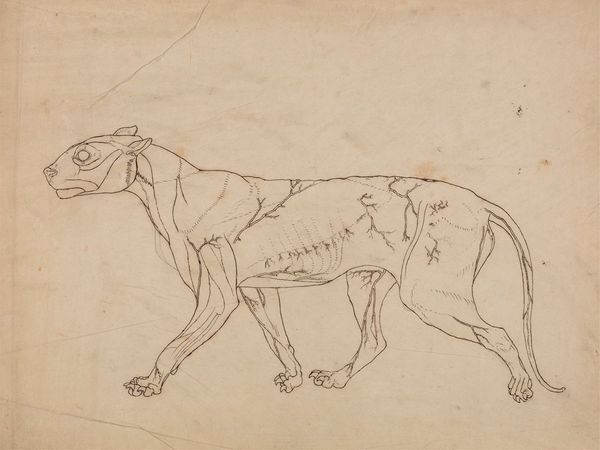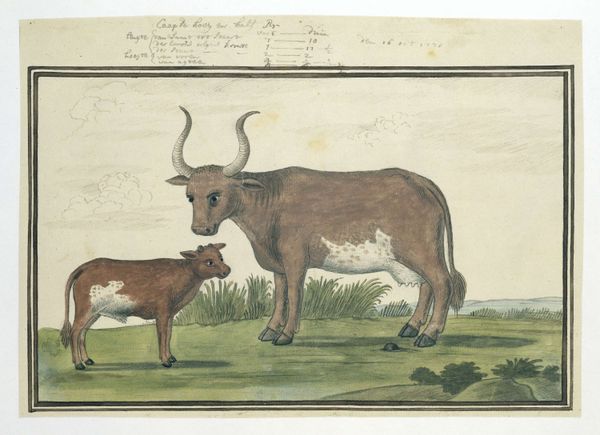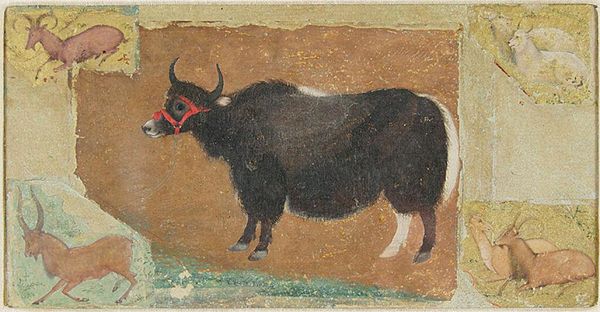
"Study of a Nilgai (Blue Bull)", Folio from the Shah Jahan Album 1515 - 1645
0:00
0:00
painting, watercolor
#
water colours
#
painting
#
landscape
#
figuration
#
watercolor
#
islamic-art
#
miniature
Dimensions: H. 15 5/16 in. (38.9 cm) W. 10 1/16 in. (25.6 cm)
Copyright: Public Domain
Editor: This is "Study of a Nilgai (Blue Bull)", a watercolor from the Shah Jahan Album, dating from 1615 to 1645, by Mansur. It’s a fairly small painting. What strikes me most is the detail on the bull versus the simplicity of the landscape. It feels… intentional. How do you interpret this work? Curator: Intention is a key concept here. Notice how the Nilgai is not just represented, but *presented*. Mansur meticulously depicts its form and texture, from its grey coat to its slender legs. Ask yourself, what does it signify, this focus on accurate representation within a royal album? Editor: Well, it's almost scientific in its precision, but placed within this decorative frame… it seems to elevate the animal to something more than just a specimen. Curator: Exactly! The frame— with its detailed floral patterns—isn't just decorative. These details evoke a sense of paradise, doesn't it? It transforms the animal study into something symbolically rich, embedding the Nilgai in the emperor's vision of his dominion, of an earthly paradise reflecting the divine. It projects the emperor’s knowledge and the reach of his power. Editor: So, it’s not *just* a realistic painting of an animal; it's conveying a message about the emperor’s power? Curator: Precisely! Animals, like the Nilgai, also have different meanings in the Islamic tradition. What associations or stories might be attached to them, and why would the emperor want them recorded? It might be less about an interest in Zoology and more about imperial iconography. Editor: I see! The painting style, along with the floral border, isn't just about aesthetics. They are deeply connected to the cultural and historical meaning of the work. Curator: It highlights the intersection of art, power, and belief. An image invites you to decode layers of symbolic intent.
Comments
No comments
Be the first to comment and join the conversation on the ultimate creative platform.
